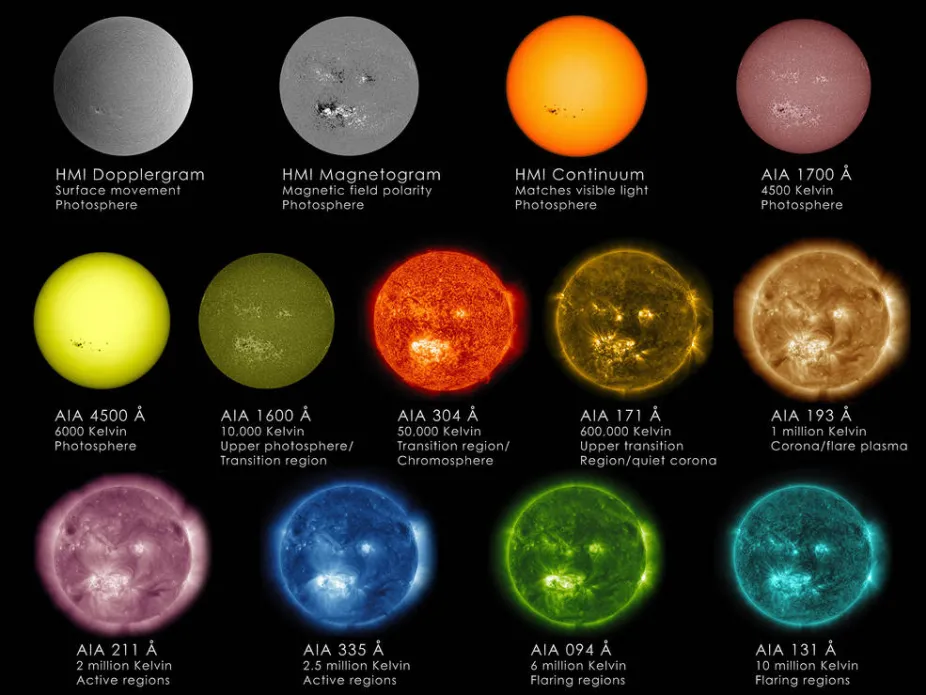The Sun in Different Wavelengths

Although these images of the Sun are displayed in different colors, many of them were captured by instruments that can view parts of the solar spectrum otherwise invisible to the human eye.
NASA
Scientists study the energy released by the Sun at different wavelengths to learn more about the Sun’s properties, including what the Sun is made of and how hot different regions are. The image above from the NASA Solar Dynamics Observatory shows the Sun at 13 different wavelengths.
Scientists add bright colors to solar images to make certain wavelengths visible to the human eye. When we see a picture of a neon green or bright red Sun, we know the image is based on some non-seeable version of light, like extreme ultraviolet radiation or x-rays. Even visible light images of the Sun’s surface, which would appear white or sometimes light yellow through a telescope, are typically colored darker yellow make it easier to see sunspots and other features.